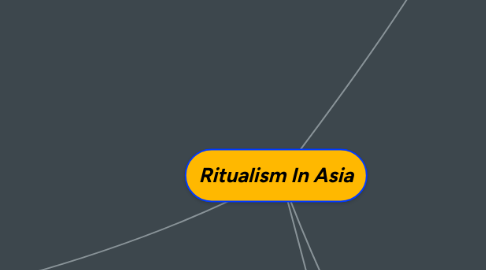Ritualism In Asia
by Alvin Toh Toh

1. Traditional Form: Nat Pwe
2. Traditional Form: Beopgochum (dharma Drum Dance)
3. Contemporary Form: Modern Baris (warrior dance)
4. Explanation
5. Characteristics
6. Movement
7. Music
8. Costume
9. Characteristics
10. Music
11. Costumes
12. Movement
13. Explanation
14. Characteristics
15. Music
16. Costume
17. Movement
18. 'Beopgo' translate to mean 'a drum that disseminates Buddha's teaching
19. Deep beats of the drum is the main source of music http://www.flickriver.com/photos/perarne/3523409541/
20. Often the drum is accompanied by beompae (Buddhist chanting) with no fixed rhythm
21. dharma drum dance
22. The ritual dance has 2 elements
23. 1st element: beopgochum is a series of movements before the drum is played
24. 2nd element: Hongochum refers to the dance that accompanies the drum and the chanting
25. No fixed set of movement to the dance
26. Dancer move spontaneously to the shift of music and tone
27. Complicated rhythmic drum patterns
28. Purpose of the dance is to use the drum to awaken people to Buddha's teachings and release them from their suffering
29. As the dance is viewed as offering one's body, costume is simple monastic clothings
30. Buddhist kāṣāya https://2.bp.blogspot.com/-sR0StHaT4p8/V610qACqG-I/AAAAAAAAALo/eWEWYZmgib4wXv4k_J8hsGWa7BFixnOrgCLcB/s1600/1.jpg
31. example of movement of beopgochum in contemporary form
32. Links and references
33. http://www.xip.fi/atd/myanmar/nat-pwe-spirit-rituals.html
34. small, traditional percussion orchestra
35. dynamic music
36. The principal priest performing the actual ritual wears a simple garment, such as a shawl, or a headgear, indicating which nat he or she will be in contact with during the ritual. http://l7.alamy.com/zooms/e09b5af01f2748e3b5526ed25cdfb258/myanmar-burma-bagan-nat-pwe-a-ceremony-to-thank-the-spirits-for-a-ctwb2p.jpg
37. The priest dances ecstatically, repeating simple steps and moving arms and hands in a manner typical of Burmese dance.
38. dancing skill is of only secondary importance.
39. http://www.gomyanmartours.com/nat-pwe-performance-nat-dance/
40. http://dev.myanmarbravo.com/facts-and-factors/culture-and-tradition/Nat-Pwe
41. Gongs, drums, and xylophones
42. sometimes whirling half-consciously on the ground while in trance
43. Links and references
44. Origin: Bali
45. http://www.xip.fi/atd/indonesia/ritual-and-trance-performance.html
46. http://tribalitour.blogspot.sg/2013/01/modern-baris-dance.html
47. virtuoso solo in which the dancer portrays the emotions of a warrior departing for the battlefield.
48. gamelan gong orchestra https://www.nch.ie/ArticleMedia/Images/branding/NationalConcertHall/NEW%20-%20Education/NO-FEE-6-NCH-Gamelan-Presentation.jpg
49. modern, completely secular variant of the sacred war dance Baris Gede
50. combination of the traditional baris and various elements of Balinese classical male dance.
51. Fast, jerking movements,
52. used to convey the warrior’s rapidly changing moods, ranging from courage to fear and from doubt to determination.
53. expressive eye movements http://farm2.static.flickr.com/1212/786233417_4ad2e0a30e_o.jpg
54. tensed arm gestures
55. often based on stories from the Mahabharata and Ramayana epics
56. distinctive costume based on that of Baris Gede, with its shimmering pointed helmet. https://simomot.com/wp-content/uploads/2014/03/melasti-makassar-290314-smt-7-e1396226814493.jpg
57. basic movements have been taken from the older dance, but have been refined and embellished
58. The dancer may bear a kris, spear, bow, or other weapons, depending on the variant performed https://i.ytimg.com/vi/dLozrg0IhKQ/maxresdefault.jpg
59. http://www.gcmtoy.com/BarisTun.htm
60. relation between dancer and orchestra is an intimate one, since the gamelan must be entirely attuned to the changing moods of the dancer’s imperious will
61. triangular-shaped white headdress bedecked with white flowers or mother of pearl shells
62. red flowers fringe this unique headdress
63. white headdress may be substituted with gilded and carved leather for a more magnificent effect
64. Black leggings with gold trim are usually worn
65. adorned with a multitude of elegantly coloured stoles, which create a very dramatic effect when he whirls around
66. Explanation
67. Traditional Form: Teyyam
68. Characteristics
69. Music
70. Costume
71. Movement
72. Origin: Korea
73. Links and references
74. https://books.google.com.sg/books?id=dEgkCwAAQBAJ&pg=PT41&lpg=PT41&dq=Beopgochum&source=bl&ots=GHf8j6NKva&sig=ovJD-VyltlnZz-bSjSVmlw_P-w0&hl=en&sa=X&ved=0ahUKEwjLro-j99jSAhVFM48KHTbYCA8Q6AEIKTAD#v=onepage&q=Beopgochum&f=false
75. https://books.google.com.sg/books?id=6xOGBgAAQBAJ&pg=PA161&lpg=PA161&dq=Beopgochum+dance+ritual&source=bl&ots=0NSU-YrCIC&sig=uv80aNabjxPzufYnks_7D17VY6s&hl=en&sa=X&ved=0ahUKEwikxOa8_djSAhWMPI8KHWnqB-kQ6AEIOzAG#v=onepage&q=Beopgochum%20dance%20ritual&f=false
76. https://www.gugak.go.kr/site/inc/file/fileDownload?dirname=/sites/gugak/files/site/20150122&filename=Chapter%203.The%20Concept%20of%20Korean%20Folk%20Dance1.pdf&type=E&boardid=1170
77. http://www.chinabuddhismencyclopedia.com/en/index.php/Korean_Buddhism_and_Art
78. Origin: Kerala, Southwest India
79. Explanation
80. Links and references
81. http://www.japantimes.co.jp/life/2011/09/11/travel/theyyam-trance-dances-in-the-indian-countryside/#.WMq11G-GOUk
82. http://www.keralapicnicspot.com/theyyam/kandanar-kelan-theyyam?utm_source=youtube&utm_medium=social&utm_content=wallpost&utm_campaign=smo
83. http://www.keralapicnicspot.com/theyyam?utm_source=youtube&utm_medium=social&utm_content=wallpost&utm_campaign=smo
84. trance ritual which man takes the role of Gods and perform the dance and give blessings to Devotees.
85. trance element has been assimilated into theatrical forms
86. settings
87. performed in places where there's presence of Gods (Temples and Ancestoral home)
88. no stages or curtain
89. performed infornt of the idols of Gods
90. Fire has an important role in the performance
91. people can watch and at the end get blessings from (dancing Gods) Theyyams.
92. can include fire dance
93. dress of Theyyam is known as ‘Theyyakolam’. beautiful and brightly coloured
94. headgear and other ornamental decorations are spectacular in sheer size and appearance. https://s-media-cache-ak0.pinimg.com/564x/fe/8c/e6/fe8ce695afb9b4d303e5e6b37cce81aa.jpg
95. makeups and facial drawings are very beautiful and complicated and are done by trained artists. https://s-media-cache-ak0.pinimg.com/564x/46/4a/2e/464a2e0cc03a768ea552d1f783e9a27b.jpg
96. Mostly the Theyyams are brightly red in coloured and the dressings including coconut leaf and flowers. https://s-media-cache-ak0.pinimg.com/564x/86/2c/8b/862c8b9d88fc29d9ad64aacb245a8655.jpg
97. traditional music instruments of Kerala are used
98. Chenda (a wooden cylindrical drum) https://layaloka.files.wordpress.com/2014/02/chenda.jpg
99. Chengila (an Indian gong) http://asiantheatre.wikispaces.com/file/view/Chengila-Percussion.jpg/91281911/Chengila-Percussion.jpg
100. Elathalam (metallic musical instrument which resembles a miniature pair of cymbals) https://c1.staticflickr.com/8/7151/6817746481_f6d9aa2dd5_b.jpg
101. Karum Kuzhal (a double reed wind instrument) https://virali.files.wordpress.com/2010/02/u-k-kunjirama-paniker-theyyam-and-kurunkuzhal-artiste.jpg
102. holy men throwing glittering dust, chanting and thrusting talismans about
103. dancer comes in front of the shrine and gradually “metamorphoses” into the particular deity of the shrine.
104. has different steps known as Kalaasams. Each Kalaasam is repeated systematically from the first to the eighth step of footwork.
105. http://www.xip.fi/atd/introduction/1-rituals.html
106. Origin: Myanmar
107. animistic, spirit ritual
108. Spirits are called nat in Myanmar
109. 'pwe' means play or performance
110. Fruits, food, cigarettes, rum, and beer are offered to the nat statues https://upload.wikimedia.org/wikipedia/commons/9/93/Offerings_of_alcohol_to_Burmese_nat.jpg
111. One or more nat priests with their assistants arrive on the scene, dancing in a relaxed manner and partaking of the offerings.
112. procedures during ritual
113. The priest sings while dancing and recites scenes from the life of the nat being portrayed.
114. At the climax of the ritual, the priest falls into a trance and “becomes” the nat in question.
115. priest announces prophecies to the assistants, who interpret them to the audience.


